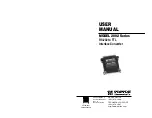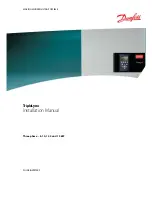
36
Chapter 5 Appendices
Notes in a bass register not on the
guitar/bass cannot be played
→
Output from MIDI OUT can be transposed as desired by
changing the TRANSPOSE setting. (p. 23)
The pitch is wrong (out of tune with
the guitar/bass)
❏
Is MIDI Bend Range the same for both sending and
receiving?
→
If the pitch is off, adjust the BEND RANGE setting.
(p. 23)
❏
Is the GUITAR/BASS switch on the rear panel set
correctly?
→
Switch to GUITAR if you are using a guitar; if using a
bass, switch this to BASS. (p. 10)
Problems occur after switching GI-20 patches.
For example, the connected sound module no longer
produces sound, or the sound won’t stop, or
modulation is applied constantly and won’t switch off.
❏
When patches are switched, no signal is transmitted to
restore the Control Change value transmitted with the
previous patch. Therefore, if the same assign settings
are used for both of the patches prior to and following
the switch, the status of the controllers is carried over.
However, if the assign settings are different for the
patch you are switching to, you cannot restore the
value for the Control Change transmitted with the
earlier patch. (p. 20)
The Note messages input to the sequencer don’t
look like the scale that is actually played
❏
To start playing sounds rapidly and achieve smooth
changes in pitch, the GI-20 transmits pitch as a
combination of Note messages and Pitch Bend
messages. This means that if only the Note messages
are examined on the sequencer’s microscope (event
list) screen, the on-screen information may differ from
what is actually performed.
→
If continuous pitch change is not required, you can
create data that is displayed more faithfully by setting
the BEND RANGE to “Chromatic Type 1–3.” (p. 23)
















































